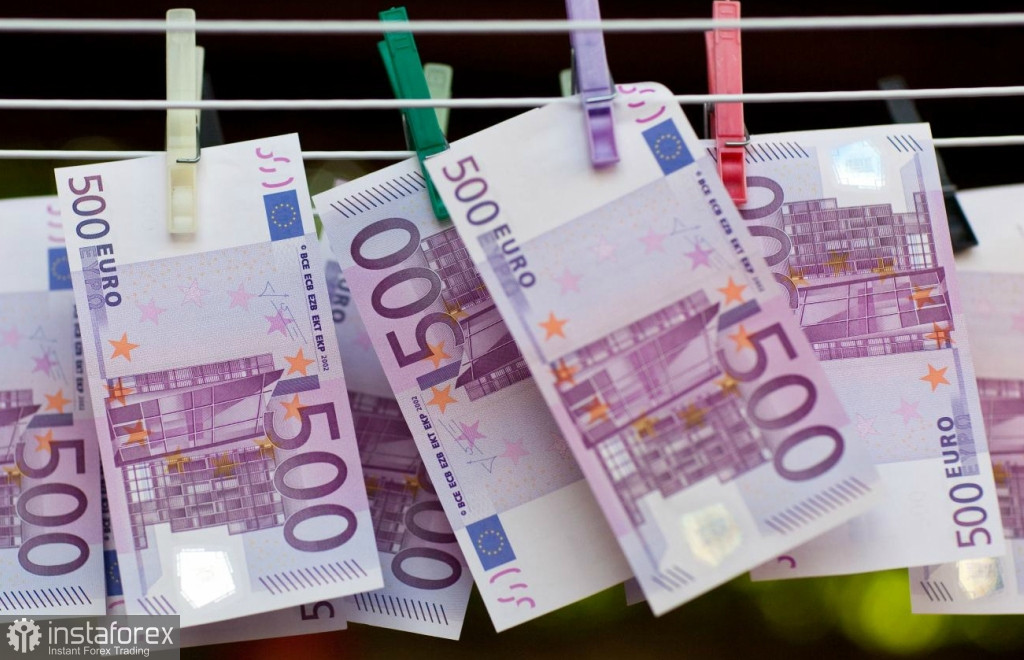The euro is attempting to reclaim its position after an active sell-off yesterday which continued on Thursday during the Asian session. Yesterday's statements from central bank officials had a negative impact on demand for risk assets, but at a closer look, nothing has changed in their words since the last meetings.

European Central Bank (ECB) President Christine Lagarde continued to stress the need for interest rate hikes, as did Bank of England Governor Andrew Bailey, while Federal Reserve Chair Jerome Powell was more restrained in his comments. Considering that nothing has significantly changed, the question is whether it makes sense to keep selling the euro.
A limiting factor for the euro, however, is the fact that no one knows what lies ahead. And it's not about a year or two from now. The question is about this fall. In this context, ECB Vice President Luis de Guindos noted yesterday that while another rate hike next month is almost guaranteed, the outcome of the next meeting remains uncertain and will depend on the economic data received in the meantime.
Guindos stated that core inflation pressure may prove more persistent than currently expected, and a strong summer tourism season is likely to drive up services costs. "I think July is a done deal," Guindos said.
Debates among ECB officials about when to halt the unprecedented series of rate hikes are also intensifying. Some have hinted that after the movement in July, it could be a good time to take a break as was done by the Federal Reserve this month, which left the rate unchanged. However, others, looking at persistent core inflation, wish to continue tightening policy this fall.
One thing is clear, the ECB is unlikely to declare with full confidence anytime soon that the peak of rates has been reached. And without a clear understanding of this ceiling, it is difficult for market participants to adapt to future market changes. The only hope is that this won't happen all at once. Though high inflation in the eurozone is currently hampering the European Central Bank's plans, there's not much to worry about just yet.
Many policymakers are also concerned that further tightening may turn into a "remedy" that does more harm than good. The strongest dovish statements within the ECB have come from Portugal's Mario Centeno, who warned that excessive tightening would deal a heavy blow to the eurozone's economy. "The economy is already suffering. And if it takes another hit, it won't be better for anyone."
Yesterday, Italy published inflation data, reporting a slowdown to 6.7% compared to the previous year in June. Figures for Germany are expected today, where economists forecast price growth to 6.7%, up from 6.3%. In any case, inflation rates in the eurozone are far from the ECB's 2% target.
Regarding the technical picture of EUR/USD, buyers need to climb above 1.0925 and settle there to regain control. This will allow them to approach 1.0960 and 1.1010 from where the price could head to 1.1060. Such a move could be challenging though without new positive data from the eurozone. In case of a decline, major buyers may step in only at around 1.0880. If there is no one there, it would be good to wait for the price to retest the low of 1.0850 or to open long positions at 1.0800.
As for the technical outlook for GBP/USD, the demand for the pound has sharply decreased, indicating the formation of a correction. We can anticipate the pair's growth after gaining control over the 1.2650 level. A breakout of this range will strengthen hope for a further recovery towards 1.2700. After that, the pound may surge towards 1.2745. In case of a drop, bears will try to take control over 1.2600. If they manage to do so, breaking this range will hit the bulls' positions and push GBP/USD to the low of 1.2570, with the prospect of reaching 1.2530.





















